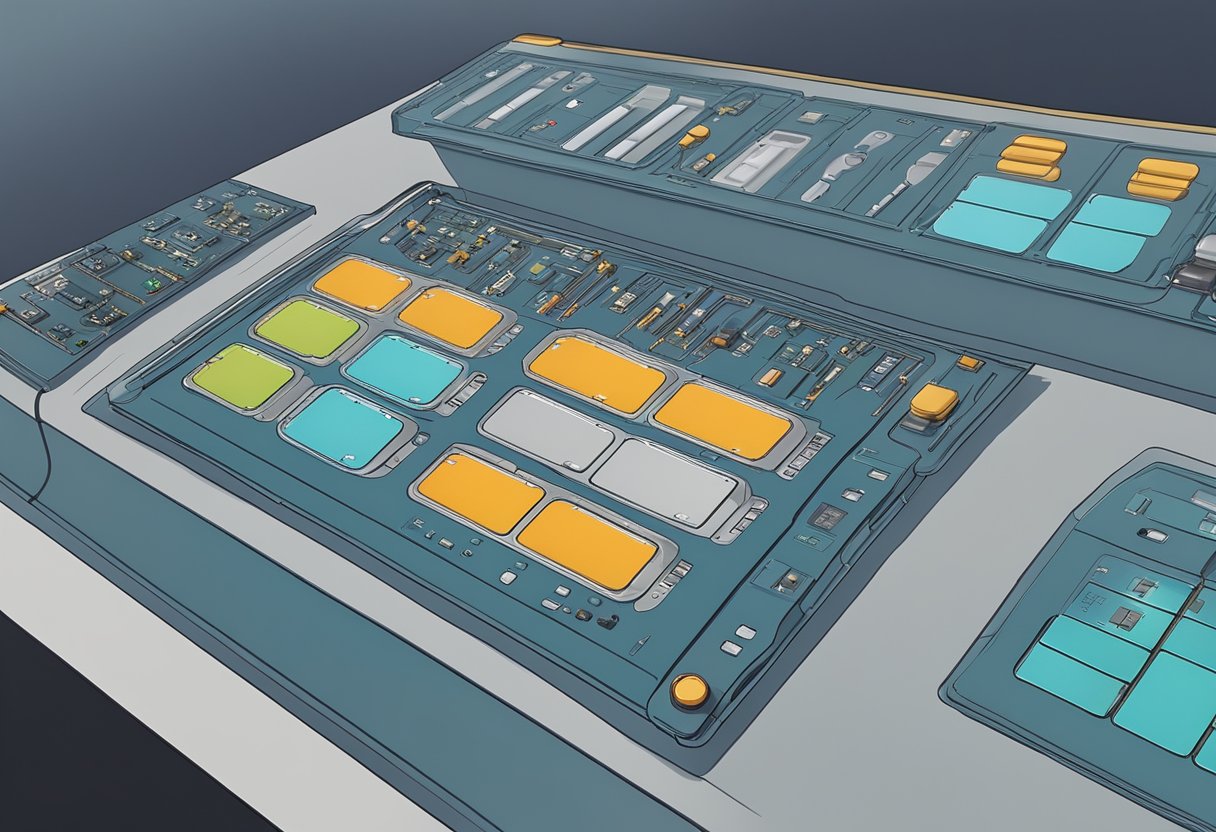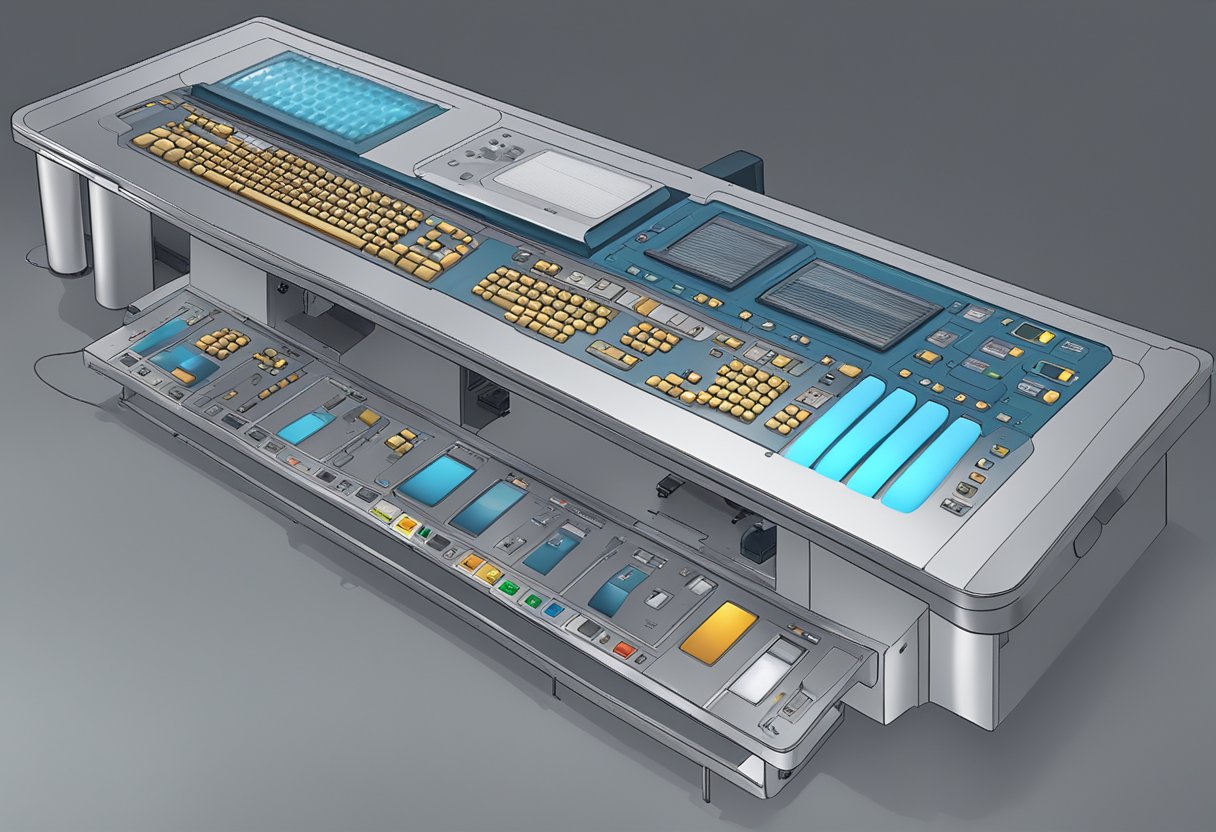Contact
Write to Us And We Would Be Happy to Advise You.
Do you have any questions, or would you like to speak directly with a representative?
By peter
If you’re in the market for a durable and efficient device control solution, you may want to consider an industrial membrane switch. Membrane switches are thin, low-profile, micro-motion assemblies that can be designed as thin as 1.00mm. They consist of one or more layers of silver or carbon conductors printed on polyester substrate layers. Pressure-sensitive adhesives are used to bond the layers together.

One of the key advantages of industrial membrane switches is their ability to withstand harsh environments. They are resistant to moisture, dust, and other contaminants, making them ideal for use in industrial and medical equipment, as well as in aerospace and military applications. They are also highly customizable, with the ability to incorporate a variety of features such as backlit keys, tactile feedback, and graphic overlays. Additionally, they are easy to clean and maintain, making them a cost-effective solution for many applications.

Industrial membrane switches are user interfaces that use pressure-sensitive adhesives to connect circuits and activate functions. They are thin and flexible, making them ideal for use in applications where space is limited. The design of a membrane switch depends on the specific application and its requirements. The design must take into account the size, shape, and function of the switch.
When designing a membrane switch, it is important to consider the tactile feedback, actuation force, and travel distance required for the application. The tactile feedback is the sensation felt by the user when the switch is pressed. Actuation force is the amount of force required to activate the switch, while travel distance is the distance the switch moves when pressed.
The materials used in the construction of a membrane switch are critical to its performance. The top layer of the switch, known as the graphic overlay, is typically made of polyester or polycarbonate. This layer provides the user interface and protects the switch from environmental factors such as moisture, chemicals, and UV radiation.
The circuit layer of the switch is made of conductive materials such as silver, copper, or carbon. The circuit layer is responsible for conducting electricity and transmitting signals to the device. The adhesive layer is used to bond the layers together and provide electrical insulation.
The materials used in the construction of the switch must be chosen based on the application requirements. For example, if the switch will be exposed to harsh environmental conditions, materials that are resistant to chemicals and UV radiation should be used.
In conclusion, the design and materials used in the construction of an industrial membrane switch are critical to its performance. When designing a switch, it is important to consider the tactile feedback, actuation force, and travel distance required for the application. The materials used in the construction of the switch must be chosen based on the application requirements.

To create an industrial membrane switch, several manufacturing processes are involved. Here are the three main processes involved in creating a membrane switch.
The first step in manufacturing a membrane switch is to print the circuitry on a substrate. This is typically done using screen printing, digital printing, or flexographic printing. Screen printing is the most commonly used method as it is cost-effective and allows for precise placement of conductive inks. The conductive inks used for printing the circuitry are typically made of silver, carbon, or copper.
Once the circuitry is printed, the next step is to laminate the layers of the membrane switch together. The layers typically include a graphic overlay, a spacer layer, and a circuit layer. The graphic overlay is the top layer of the membrane switch and is responsible for providing the user interface. The spacer layer is used to create a gap between the graphic overlay and the circuit layer, allowing the switch to actuate. The circuit layer is the layer that contains the printed circuitry.
Laminating the layers together is typically done using a heat-activated adhesive. The adhesive is applied to the back of the graphic overlay and the spacer layer, and the layers are then pressed together with the circuit layer in between.
The final step in manufacturing a membrane switch is to cut and tool the switch. This involves cutting the switch to the desired size and shape and adding any necessary features such as embossing, backlighting, or adhesive backing.
Cutting and tooling are typically done using steel rule dies. These dies are custom-made to match the size and shape of the switch and are used to cut the switch to the desired shape. The dies can also be used to add any necessary features such as embossing or backlighting.
Overall, the manufacturing processes involved in creating an industrial membrane switch are precise and require specialized equipment and expertise. By following these processes, manufacturers can create high-quality membrane switches that meet the needs of their customers.
Membrane switches are widely used in various industries due to their flexibility, durability, and cost-effectiveness. There are several types of membrane switches available, each with its unique properties and applications.
Tactile membrane switches provide physical feedback to the user when activated, which makes them ideal for applications where the operator needs to know whether the switch has been pressed or not. Non-tactile membrane switches, on the other hand, do not provide any physical feedback, but they are quieter and have a longer lifespan than tactile switches.
Flexible circuits are a type of membrane switch that is made of a thin, flexible material such as polyimide. They are ideal for applications where space is limited, and the switch needs to be flexible to fit into a curved or irregular surface. Flexible circuits are also more durable than traditional printed circuit boards, making them ideal for applications where the switch needs to withstand harsh environments.
Backlit membrane switches are designed to provide illumination in low-light environments. They are ideal for applications where the operator needs to see the switch in the dark, such as in a cockpit or control room. Backlit membrane switches can be customized to provide different levels of illumination, colors, and patterns, making them ideal for branding and marketing purposes.
In summary, there are several types of membrane switches available, each with its unique properties and applications. Tactile and non-tactile switches provide different levels of physical feedback, while flexible circuits are ideal for applications where space is limited. Backlit membrane switches are designed to provide illumination in low-light environments and can be customized to provide different levels of illumination, colors, and patterns.
When it comes to industrial membrane switches, user interface integration is key. The membrane switch is often the primary means of interaction between the user and the device, so it is important to ensure that the switch is designed to meet the user’s needs. Here are two key aspects of user interface integration to consider:
The graphic overlay is the top layer of the membrane switch and is the part of the switch that the user interacts with. As such, it is important to customize the graphic overlay to meet the specific needs of the user. This can include everything from the layout of the buttons to the colors used on the overlay. By customizing the graphic overlay, you can ensure that the user has a positive experience when interacting with the device.
Touch feedback mechanisms are an important part of any membrane switch. These mechanisms provide tactile feedback to the user when a button is pressed, letting the user know that the button has been activated. There are a variety of touch feedback mechanisms available, including metal domes, polydomes, and capacitive touch sensors. Each of these mechanisms has its own advantages and disadvantages, so it is important to choose the one that is best suited to your specific application.
In summary, user interface integration is a critical aspect of industrial membrane switch design. By customizing the graphic overlay and selecting the right touch feedback mechanism, you can ensure that your membrane switch provides a positive user experience.
Industrial membrane switches have a wide range of applications and are used in various industries. Below are some of the industries where industrial membrane switches are commonly used:
In the medical industry, membrane switches are used in various applications such as patient monitoring systems, diagnostic equipment, and medical devices. These switches are preferred in medical equipment because they are easy to clean, durable, and can withstand harsh chemicals and frequent usage. Moreover, membrane switches can be customized to meet the specific requirements of medical equipment.
In industrial control systems, membrane switches are used in various applications such as control panels, machine interfaces, and automation systems. These switches are preferred in industrial control systems because they are cost-effective, durable, and can withstand harsh environments. Additionally, membrane switches can be customized to meet the specific requirements of industrial control systems.
In the consumer electronics industry, membrane switches are used in various applications such as remote controls, gaming devices, and home appliances. These switches are preferred in consumer electronics because they are cost-effective, easy to use, and can be customized to meet the specific requirements of the device. Moreover, membrane switches can be designed to have a low profile, which makes them ideal for devices with limited space.
Overall, industrial membrane switches are versatile and can be used in various applications across different industries. Whether it’s for medical equipment, industrial control systems, or consumer electronics, membrane switches offer a cost-effective, durable, and customizable solution.
Do you have any questions, or would you like to speak directly with a representative?